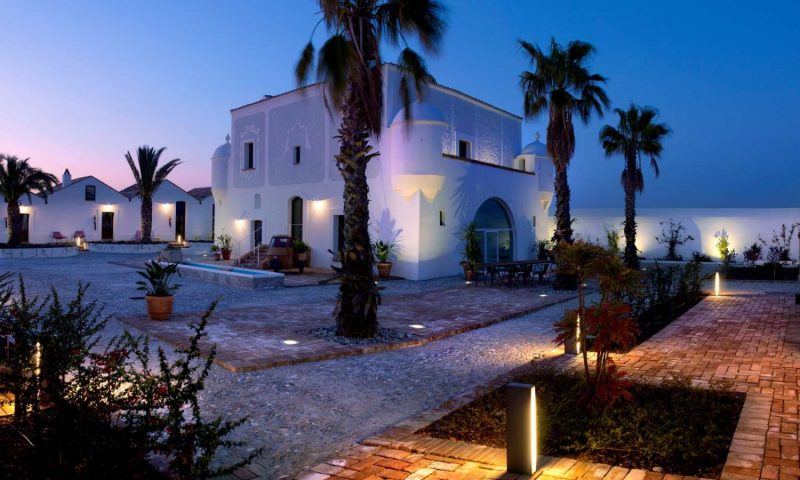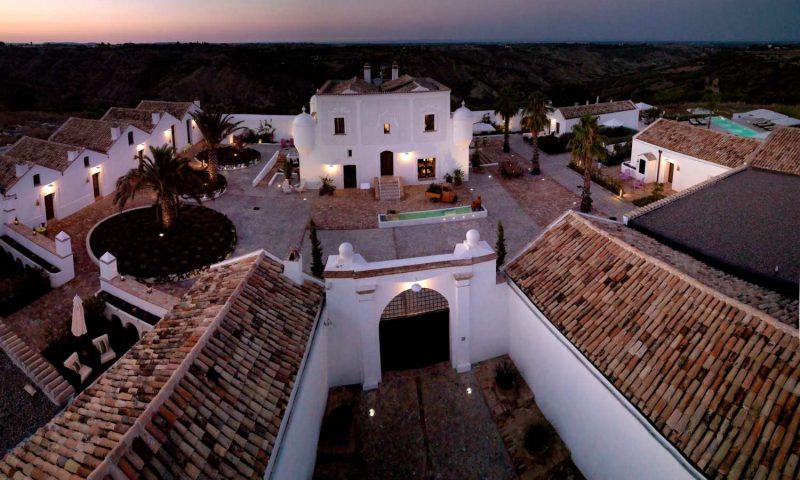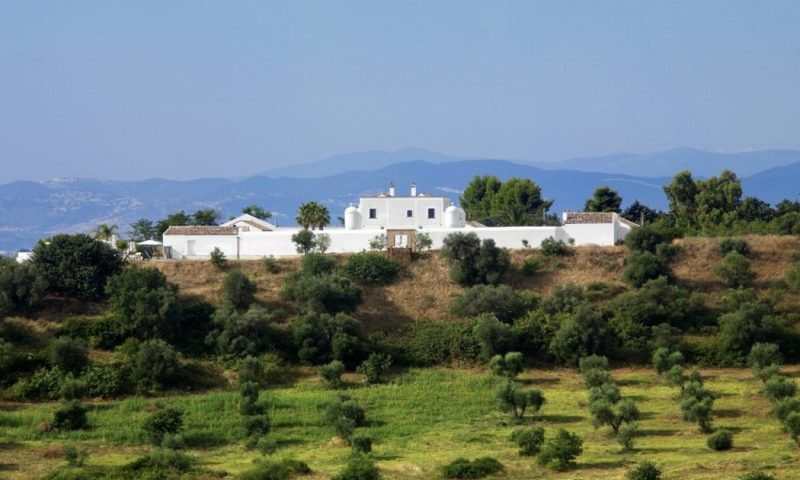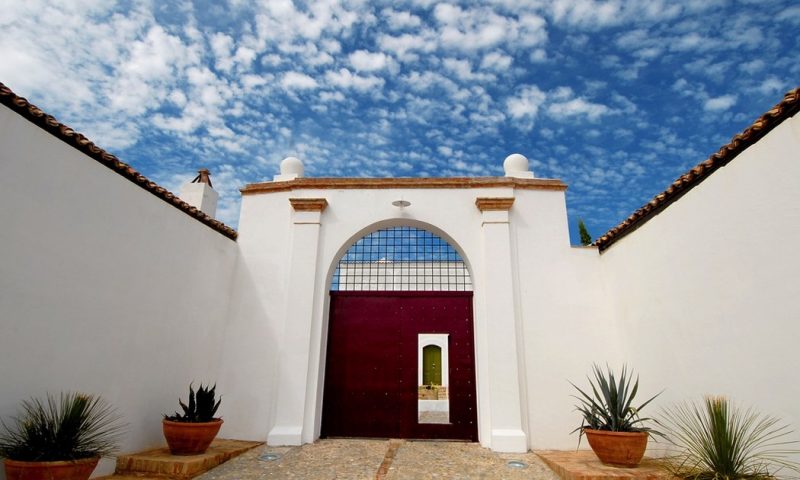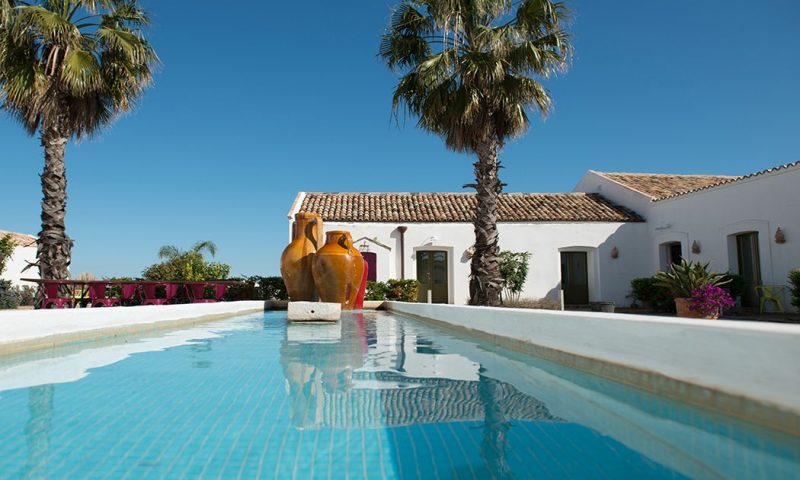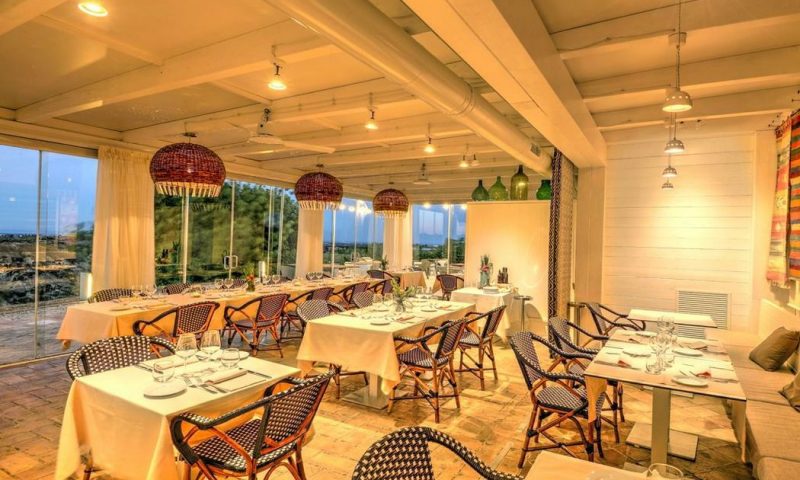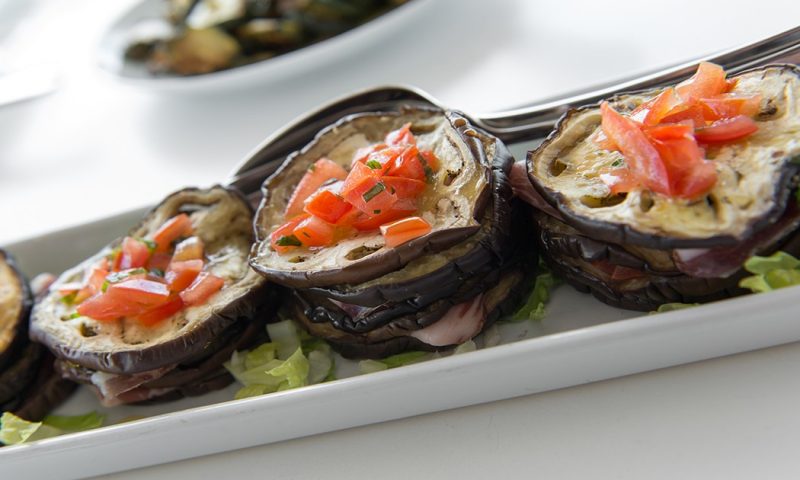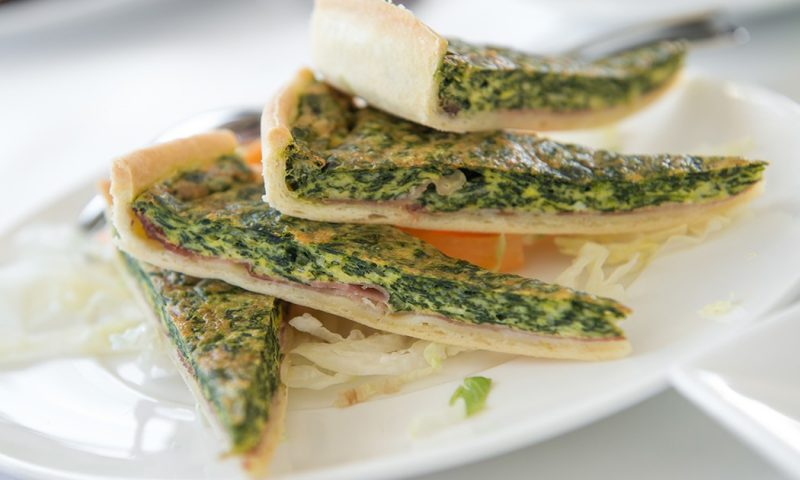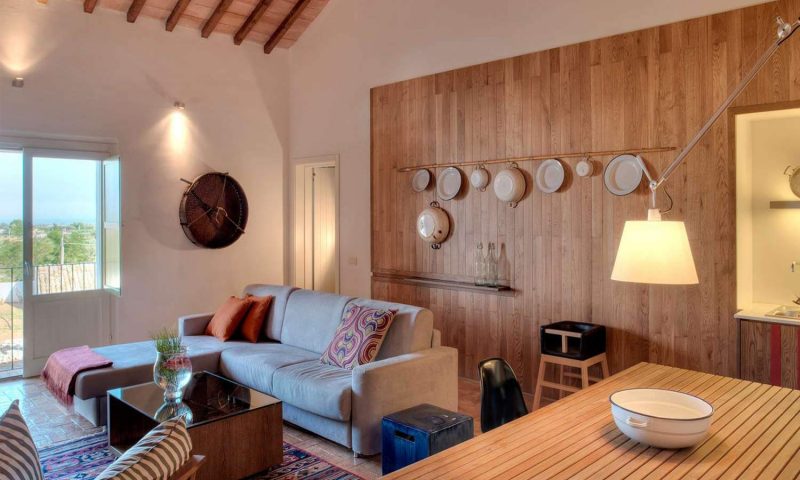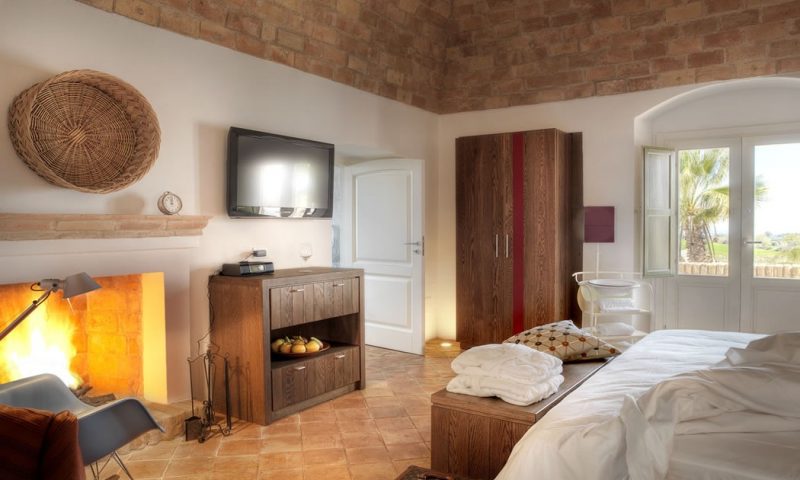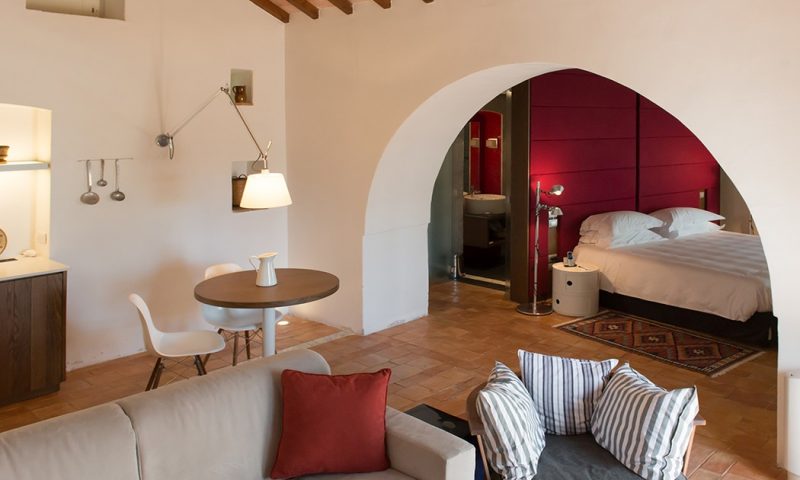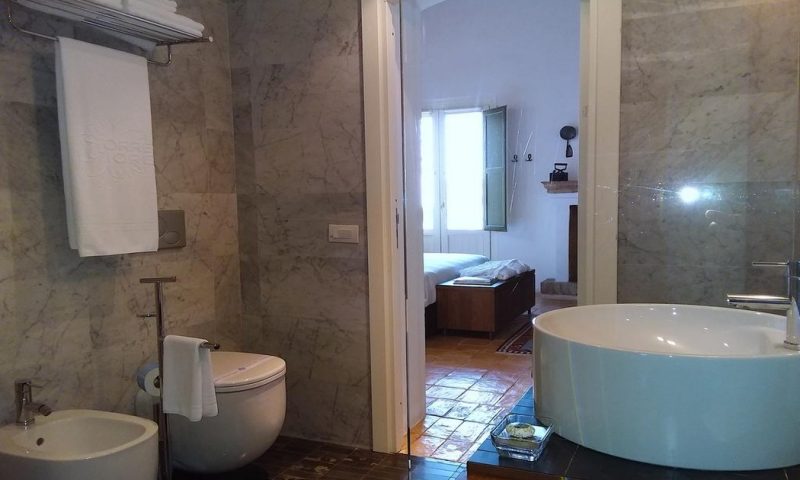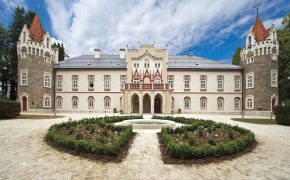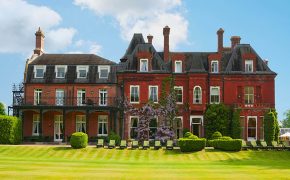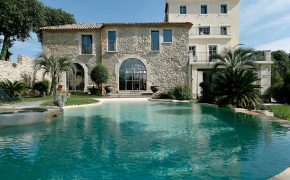Surrounded by a pristine rural setting, the Hotel Torre Fiore is a trend-setting boutique hotel.
Originally built as a military outpost to guard against Turkish invasions, this 16th century masseria has been re-conceptualized to welcome the modern traveler seeking an intimate experience of an ancient land’s undiscovered beauty, rich in history, culture, traditions and authentic southern Italian cuisine.
Located within view of the picturesque town of Pisticci and situated only 15 minutes from the sandy beaches of the Ionian Sea, the Hotel Torre Fiore is a stronghold to enjoy the excursions and diversions of this region.
Within its walls, the Hotel Torre Fiore provides a relaxed sanctuary of comfort that personifies a new relaxed luxury. Torre Fiore offers spacious modern suites in restored masonry structures. Each suite is unique and the hotel amenities are designed with state-of-the-art luxuries.
THE HISTORY
- 16th Century: Torre Fiore was originally owned by the Fiore family and called the ‘Casolare di Tenuta Fiore”. It was used for strategic military purposes. It acted as protection for the farming community against invading Saracens, thieves, and brigands terrorizing Southern Italy.
- Mid 16th Century: Torre Fiore was a scene of a bloody battle between citizens of Pisticci and Saracen Pirates headed by Turhud Re’Il Dragut and backed by Barbarossa. Saracen pirates seized Torre Fiore and the citizens of Pisticci’s subsequent violent campaign to regain its possession was successful. Following the raid, the Fiore family further fortified the Torre with turrets and walls for greater protection. The property grew to be a profitable livestock operation and flourishing family farming facility and residence.
- 19th Century: Bands of thieves continued to terrorize the region, and these thieves used Torre Fiore as protection during their raids. Superstition surrounded Torre Fiore due to its colourful past, and ancient legends of thieves and wizardry.
- Late 19th Century to 20th Century: The property was acquired by the Durante family and used as a farm and secondary residence. It was relatively unoccupied since the mid 1900s.
- 2005: The Giannones, Canadians of Italian decent, originally from Pisticci, purchased the property with the intention to restore its historical structure. Renamed “Torre Fiore” in order to respect its founders, and has been re-conceptualized into a small luxury “fort” resort.
- 2010: The opening of “Torre Fiore Hotel Masseria”, providing the setting for a new invasion of discerning travellers.
The Giannone Family, having origins in Pisticci, have over the years maintained close ancestral ties. While making a life in Canada, alongside many other cultures, the Giannones have been afforded an invaluable “viewing distance” when looking back to their Basilicatan culture, landscape and age-old treasures.
This admiration extends to the unwavering warm hospitality one is inevitably greeted with in this mostly unknown region of Italy. The project started out of a desire to solidify these ties and create a comfortable “home base” where the Giannones could extend their own hospitality, and share these delights with family and friends.
The family set out to purchase property and build their house. In 2006, once the entrance gates to this forlorn walled-in structure swung open, it was clear they had stumbled upon a hidden gem.
Today, the Giannones have fulfilled their vision for a special, intimate hotel in a place that is dear and extraordinary. This area of Basilicata is witnessing the first surge of attention from international press and discerning tourists alike, for its great food, beaches, landscape and mostly its people.
THE DESIGN
On the edge of a picturesque valley, the former Casolare della Tenuta Fiore, a walled-in farm complex is reconceptualized as a 13-suite “fort resort”. Embraced by its protective walls and 16th century lookout tower, the renamed Torre Fiore is located in the largely undiscovered sublime paesaggio overlooking the Ionic coast of Basilicata, Italy.
The design, in the spirit of the Casale’s storied past, is conceived by Giannone Petricone Associates as a 21st century gentle invasion.
Installations of contemporary elements in distressed wood, local and Persian stone, glass and pomegranate upholstery are positioned revealed against the carefully restored vintage structure in anticipation of the newest “invader” – today’s tourist.
Travellers eager to venture in this little-known yet extraordinary territory are met with the designers’ conception of contrasting interventions of comfort whose richness parallels that of the rustic landscape.
Freestanding, oversized headboards sit skewed in the lofty “casede” to conceal the glazed bathrooms and rain-head showers that sometimes spill their pristine bathtub out into the open.
Strands of foreign materials and fabrics insert themselves unexpectedly into the new and restored surfaces as a way to expose the surgical “hand” which defines this new invasion. Ultimately, the ruin is brought back to life with monumental effort to precisely restore the handcrafted roofs, masonry, and whitewashed stucco.
The fortification is then somewhat disarmed by a supple and layered architecture to create a loose exclusivity, breached only by the outdoor restaurant, terrace and infinity-edge pool that meet the edge of the uncontaminated valley.
TORRE SUITE
Second level panoramic suite with complete 360 degree views towards the sea, swimming pool, valley, courtyard and countryside, including the nearby characteristic hill town of Pisticci.
Two separate bedrooms – the spacious master bedroom includes a king-sized bed and a luxurious ensuite bathroom with open rain shower and freestanding Antonio Lupi bathtub.
The master suite also features a spacious balcony/terrace where guests wonder at the spectacular views while lounging. The second bedroom features a queen sized bed that separates into two single beds, upon request. The adjacent second full bathroom features an oversized shower.
A central living room, with access to the other balcony/terrace, includes a sofa bed (opened upon request). Adjoined is what was once the “cucina” with table, and stunning views out to the valley.
Suite amenities include air conditioning, 3 flat screen LCD colour TVs (2 with Sky Hotel), mini-bar, wireless internet connection, cordless telephone, alarm clock radio, iPod and iPhone stereo, and in-suite security safe.
STALLA SUITE
Accessed from a beautifully landscaped and furnished courtyard (mangiatoia). Super high ceilings, very special suite with main floor master bedroom featuring king-sized bed and freestanding Antonio Lupi bathtub plus ensuite bathroom with oversized shower for 2 people.
Includes a second floor open loft permitting up to 3 persons to sleep in single bed and double bed (separable upon request). On the main level is an additional complete bathroom with oversized shower.
This unique suite includes a very spacious living area with sofa-bed (opens into a queen-sized bed upon request). This living area is the ideal gathering place. Adjacent to the living area is a dining/conversion table which seats up to 6 persons.
Suite amenities include air conditioning, mini-bar, wireless internet connection, cordless telephone, alarm clock radio, iPod and iPhone stereo, 2 LCD flat screen colour TVs (2 with Sky Hotel) and in-suite security safe.
JUNIOR SUITE
Suite featuring a separate sleeping area with a king-sized or queen-sized bed (separable into two single beds, select suites only), free-standing Antonio Lupi bathtub, living area with sofa bed (opened upon request), 2 LCD flat-screen colour TV (1 TV with Sky Hotel), luxurious bathroom with 2 person shower, air conditioning, mini-bar, internet wireless connection, cordless telephone, alarm clock radio, iPod and iPhone stereo and in-suite security safe.
CLASSIC ROOM
Spacious bedroom with king-sized bed and adjoining bathroom with spacious shower for 2 people, air conditioning , mini-bar, wireless internet connection, cordless telephone, alarm clock radio, iPod and iPhone stereo, LCD flat-screen colour TV with Sky Hotel and in-suite security safe.
RESTAURANT PATIO DELLA TORRE
To Truly appreciate the culture of Italy and the region of Basilicata, it is essential to experience the aromas and flavours that infuse and define its cuisine. Hotel guests and visitors will savour this occasion at Patio Della Torre Restaurant.
Fine genuine cuisine using local artisanal tradition and seasonal ingredients with an occasional international intervention.
PISTICCI
In the midst of the Valle del Basento and Cavone is where one will come across Pisticci, spread over three Calanchive (gully/ravines) hills not many kilometres from the Jonic Coast.
Pisticci’s foundation came about by the hands of the Enotri during the Iron Age (IX century BC) as testified by Necropolises (VII century BC) found on the territory. It was a centre in contact with the Greek culture of Metaponto, enduring vast cultural influences.
During the V century BC it excelled in pottery production in Attic style which had its maximum exponent in the so called “Pittore di Pisticci” (Pisticci Artist); probably an artist who had emigrated from Greece.
During the III century BC, following the defeat of Taranto, Pisticci also entered under the orbit of Rome and over the years became an important agricultural centre; mainly for olives.Its name derives from the Latin Pesticius, that is pasture land.
Another etymology suggests it derives from the Greek pistoikos, signifying “loyal place”, seemingly a named earned in the field of war against the Romans (III century BC). During the High Medieval period it was a Byzantine centre which saw the arrival of Basilian monks escaping from iconoclastic persecution operating in the East.
These monks formed new communities and also erected monasteries in Pisticci. The district of Terravecchia was created and then made a fief of the Normans during the XI century.
Under the Swabians, Pisticci was assigned to the Sanseverino family (1212) who were succeeded by the Spinelli family only during 1553. It then passed to the Acquara and Càrdenas families. Over the centuries the terrain where the village lay gave way to landslides. The one during 1688 was terrible and caused partial demolition of the ancient district of Terravecchia.
A VISIT TO THE CITY
The Mother Church, dedicated to Saints Peter and Paul, is situated in a panoramic position facing the ruins of the ancient Norman Castle. It guards canvases from the Neapolitan School and precious wooden altars.
Its bell tower dates back to the era of the previous church (XII century).In the City, which is characteristic for its white houses, is where one will come across the Sant’Antonio Church which preserves canvases of Domenico Guarino. In the ancient district of Terravecchia, at 1km from the Village, one can visit the Santa Maria del Casale Abbey (XI-XII century).
In the San Basilio locality, one can visit the Masseria Berlingieri, derived from the Castle which was erected during 1050 by Robert Guiscard, then handed over to the Basilian monks (1133) and later the Benedictines.
PLACE OF INTEREST
The ruins of the Norman Castle; The Mother Church of Saints Peter and Paul (1542); Sant’Antonio Church or Convent; Madonna of Loreto Church; Franchi Tower; Dirupo District; Palazzo Giannantonio; Palazzo De Franchi; Palazzo Rogges; Palazzocchio; Immaculate Conception Church (XVI century); Santa Maria del Casale Abbey (XII century); Masseria in the San Basilio locality; Excursions to San Teodoro Nuovo (VII century BC).
EVENTS
Feast of Sant’Antuono on 17th January; Feast of the Assunta on 15th August; Feast of San Rocco on 16th August; Feast of the Madonna delle Grazie on the 2nd Sunday of September in Marconia.
SEASIDE
Hotel Torre Fiore is 15 minutes driving from the main beaches of Marina di Pisticci with private and free lidos. Once here , upon request, we will make a reservation at the lido you will choose.
30 minutes away is the beach of Policoro, with its beautiful promenade by the beach where you can enjoy your cocktail or take a walk right in front of the sea. We offer, upon request, a shuttle service to the beach or to the nearby sites with an extra cost.
Marine of Pisticci is confirmed as a green flag for the 2018 beach season as a child-friendly beach: the Italian Pediatricians Association has awarded the Green Flag to the town of Pisticci and its wonderful beach.
The acknowledgement is the result of an assessment by Italian Pediatricians on clear and shallow water near the shore, sand for towers and castles, lifeguards and lifeboats, games, spaces for changing diapers or nursing, and nearby ice-cream parlors, places for aperitif and restaurants for adults.
The awards concerned 136 beaches, two of which in Basilicata. In addition to the Pisticci marina, the Green Flag has been assigned to Maratea. Marine of Pisticci named after the most famous local Lucana indoor, Pisticci, and is an attractive coastal resort of Ionian Sea, located just South of the mouth and of Basento river.
Offers its Mediterranean climate and a sandy beach of great extension, surrounded by a magnificent pine forest, ideal for families with children here are plenty of space to enjoy relaxing days at the beach, clean sea and long sunny days.
The 3rd Cavone Beach of Scanzano Jonico owes its name to this river that flows nearby. This is a beautiful and pristine beach, with a large and long coastline of soft golden sand, bordered by green trees around that give a nice natural shade and watered by a beautiful sea, blue and clear, rich in flora and fauna.
The beach is often frequented by local fisher-men, making it even more authentic. For ragging should take the highway 106, follow to 3rd Cavone after about 2 km you will come to a pine forest where you park, then continue on foot for about 300 meters.
The Bosco Pantano Beach of Policoro is named magnificent forest which is just beyond it, which today is a testimony of great natural value, and scientific landscape of the vast plain hardwood forest that once covered much of Ionian coast.
The area is currently under Site of Community Importance. The beach is a beautiful, wide expance of soft sand washed by a crystalline, so clean that there is still reproduce a few specimen of sea turtles, including the famous Caretta Caretta.
To reach the beach you must take the highway 106 south, past the town of Policoro and immediately afterwards, turn left towards the nature reserve Bosco Pantano.
CRACO A GHOST TOWN
Craco is a ghost town and comune in the Province of Matera, in the southern Italian region of Basilicata. The old town was abandoned due to natural disasters.
The abandonment has made Craco a tourist attraction and a popular filming location. In 2010, Craco has been included in the watch list of the World Monuments Fund.
Around 540 BC, the area was called Montedoro and inhabited by Greeks who moved inland from the coastal town of Metaponto. Tombs have been found dating from the 8th century BC, suggesting the original settlement dates back to then.
The town’s name can be dated to 1060 AD, when the land was the possession of Arnaldo, Archbishop of Tricarico, who called the area Graculum, which means in Latin “little plowed field”. This long association of the Church with the town had a great influence on the inhabitants.
From 1154 to 1168, the control of the village passed to the nobleman Eberto, probably of Norman origin, who established the first feudal control over the town. Then in 1179, Roberto of Pietrapertosa became the landlord of Craco. Under Frederick II, Craco was an important military center and the Castle Tower became a prison.
In 1276, a university was established in town. During the 13th century, Craco became feudal tenure of Muzio Sforza. The population increased from 450 (1277), to 655 (1477), to 1,718 (1532), until reaching 2,590 in 1561; and averaged 1,500 in succeeding centuries.
By the 15th century, four large palazzi had developed in the town: Palazzo Maronna near the tower, Palazzo Grossi near the big church, Palazzo Carbone on the Rigirones property, and Palazzo Simonetti. During 1656, a plague struck, with hundreds dying and reducing the number of families in the town.
By 1799, with the proclamation of the Parthenopean Republic, the townspeople overthrew the Bourbon feudal system. Innocenzo De Cesare returned to Naples, where he had studied, and promoted an independent municipality.
The republican revolution lasted few months and Craco returned under the Bourbon monarchy. Subsequently, the town fell under the control of the Napoleonic occupation. Bands of brigands, supported by the Bourbon government in exile, attacked Craco on July 18, 1807, plundering and killing the pro-French notables.
By 1815, the town was large enough to divide it into two districts: Torrevecchia, the highest area adjacent to the castle and tower; and Quarter della Chiesa Madre, the area adjacent to San Nicola’s Church. After the unification of Italy, in 1861 Craco was conquered by the bands of brigands headed by Carmine Crocco.
With the end of the civil strife, the greatest difficulty the town faced became environmental and geological. From 1892 to 1922, over 1,300 Crachesi migrated to North America mainly due to poor agricultural conditions.
In 1963, Craco began to be evacuated due to a landslide and the inhabitants moved to the valley of Craco Peschiera. The landslide seems to have been provoked by works of infrastructure, sewer and water systems.
In 1972 a flood worsened the situation further, preventing a possible repopulation of the historic center. After the earthquake in 1980, the ancient site of Craco was completely abandoned. In 2007, the descendants of the emigrants of Craco in the United States formed the Craco Society.
MATERA
Matera is a city in the province of Matera in the region of Basilicata, in Southern Italy. It is the capital of the province of Matera and the capital of Basilicata from 1663 to 1806. The town lies in a small canyon carved out by the Gravina.
Known as “la Città Sotterranea” (the Subterranean City), Matera is one of the oldest continuously inhabited cities in the world, having been inhabited since the 10th millennium BC. Its historical center “Sassi”, along with the Park of the Rupestrian Churches, is considered a World Heritage Site by UNESCO since 1993.
On 17 October 2014, Matera was declared Italian host of European Capital of Culture for 2019 with the Bulgarian town of Plovdiv.
The area of what is now Matera has been settled since the Palaeolithic. The city was allegedly founded by the Romans in the 3rd century BC, with the name of Matheola after the consul Lucius Caecilius Metellus. In AD 664 Matera was conquered by the Lombards and became part of the Duchy of Benevento.
In the 7th and 8th centuries the nearby grottos were colonized by both Benedictine and Basilian monastic institutions. The 9th and 10th centuries were characterized by the struggle between the Byzantines and the German emperors, including Louis II, who partially destroyed the city.
After the settlement of the Normans in Apulia, Matera was ruled by William Iron-Arm from 1043. After a short communal phase and a series of pestilences and earthquakes, the city in the 15th century became an Aragonese possession, and was given in fief to the barons of the Tramontano family.
In 1514, however, the population rebelled against the oppression and killed Count Giovanni Carlo Tramontano. In the 17th century Matera was handed over to the Orsini and then became part of the Terre d’Otranto di Puglia.
Later it was capital of Basilicata, a position it retained until 1806, when Joseph Bonaparte reassigned it to Potenza. In 1927 it became capital of the province of Matera. On September 21, 1943, the Materani rose against the German occupation, the first Italian city to fight against the Wehrmacht.
THE SASSI OF MATERA
Matera has gained international fame for its ancient town, the “Sassi di Matera”. The Sassi originated in a prehistoric troglodyte settlement, and these dwellings are thought to be among the first ever human settlements in what is now Italy.
The Sassi are habitations dug into the calcareous rock itself, which is characteristic of Basilicata and Apulia. Many of them are really little more than caverns, and in some parts of the Sassi a street lies on top of another group of dwellings.
The ancient town grew up on one slope of the rocky ravine created by a river that is now a small stream, and this ravine is known locally as “la Gravina”. In the 1950s, the government of Italy used force to relocate most of the population of the Sassi to areas of the developing modern city.
Until the late 1980s the Sassi was considered an area of poverty, since its dwellings were, and in most cases still are, uninhabitable.
The present local administration, however, has become more tourism-oriented, and it has promoted the regeneration of the Sassi with the aid of the Italian government, UNESCO, and Hollywood. Today there are many thriving businesses, pubs, and hotels there.
THE ANGEL FLIGHT
Above the Lucanian Dolomites, in the heart of Basilicata, a steel cable suspended between the tops of two small towns, Castelmezzano and Pietrapertosa let you make and live a unique experience: the Angel Flight.
It’s an attractor, a new concept, which make you feel a great experience of the environmental heritage, a new offer of of leisure and recreation, for who seek new emotions. An adventure in contact with nature and with a unique landscape, discovering the soul of this land.
Tied in total safety whit a harness, attached to the steel cable, you will live the thrill of flying some minutes in a fantastic adventure, one of the best in Italy and in the world for the beauty of the landscape and the maximum height of flight.
Arriving in one of the two beautiful town, you will have the opportunity to walk between the houses and the rocks, a fascinating excursion historical and natural.
You will taste the typical food and gastronomy and enjoy the beautiful panorama from a point of view, what you will see is usually a privilege only for winged creatures: birds and angels.
At the end of the first flight, arriving in the other town, the “angels” will be back down to earth and, freed from the harness, will reach the center. Using the shuttle service they reach the departure station of the other line.
The dream will begin again suspended between heaven and earth during the return flight. The ticket includes round-trip flight on two different lines whose slopes are respectively 118 and 130 meters.
The first, known as “San Martino” line, starts from Pietrapertosa (altitude 1020 mt) and arrives in Castelmezzano (arrival altitude 859 m) after covering 1415 meters with the top speed of 110 km/h.
The “Peschiera” line starts from Castelmezzano (altitude 1019 meters) and arrives in Pietrapertosa (arrival altitude 888 mt), covering 1452 meters with the top speed of 120 km/h.
THE EAGLE FLIGHT
You can experience the Volo dell’Aquila in San Costantino Albanese, Basilicata, a small town in the province of Potenza whose territory is part of the Pollino National Park. It’s a beautiful experience that makes you fly from an upstream to a downstream station.
Downstream you will be secured to get into the four-seat Aquila vehicle, which is equipped with grab bars and footrests. A pulling cable will carry the Aquila to the upstream station from which the very flight will start.
A completely safe experience which is also suitable for families with children aged 10+ who want to share a moment of pleasure, pure fun and healthy adventure in the Pollino Park.
GOLF
Hotel Torre Fiore is the best location for those who love golf because it is easily connected to the most well-known golf courses in Basilicata. Golf Club di Metaponto is only 20 minutes away. It’s a nice 18-hole championship golf course. It is part of a citrus grove and is 6284 metre long, par 72.
Golf Club Riva dei Tessali is the oldest golf course in southern Italy and is 40 minutes away. It is a 5974 metre, par 71, SR 133 and 18-hole championship course, with two putting greens and 3 Pitch and Put holes.
It is surrounded by a pine grove near the sea and is perfect for those who want to measure themselves with a challenging course.
THE ARCHEOLOGIC AREA OF METAPONTO
The archeologic area of Metapontum is an archeological site with remains of the ancient city of Metaponto in Lucania, in the territory of the commune of Bernalda (MT), where many of the discovered remains are conserved, having been found on the Strada Statale 106 Jonica.
In this area, there are Greeks remains, as the Palatine Tables and Temples of Apollo and Hera, built in 570 BC, all in Doric style. Palatine Tables are the remains of a Doric temple of the 6th century BC dedicated to the mythological deity, Hera.
The remains of the monument are located on the last wave of Givon, ancient coastal beads, near the right bank of the river Bràdano erected on the ruins of an ancient Neolithic village, along the road from prehistoric Heraclea-Siris, about 3 km from the city of Metapontum.
The temple was restored in 1961, was initially attributed to the worship of the goddess Athena, after the fragment of a vase, found during excavation in 1926, was found a votive dedication to the goddess Hera.
Until the 19th century the Palatine Tables were also locally called “Palatine shelves” or “Columns Palatine”, probably remember the struggle against the Saracens of the Paladins of France.
The temple was also called “School of Pythagoras,” in memory of the great philosopher Pythagoras. The remains of the temple consist of 20 channels and 15 columns with Doric capitals. Of the 15 columns, 10 are on the north side and 5 on the south.
The National Archaeological Museum of Metapontum, qualified through a selection of pieces recently acquired, proposes a Metapontino’s framework, from prehistory until late ancient period. The main sections describe:
- Forms of initial population by the Enotri-Chon during the Middle Bronze Age and Iron Age
- The arrival of the Greeks from Acaia (region of Peloponnese) during the 7th century BC
- The formation of the colony and the city’s development
- Change centers of the Italic hinterland between the 4th and 6th centuries BC
- The period of Roman conquest and the gradual abandonment of Metapontum
The exhibits consist of prehistoric objects and ornaments found in burial among which jewelry and objects in bronze and ivory of high quality.
The majority of evidence comes from the Greek age of Pisticci Incoronata site, with cups and decorated pottery, among which the censer with trees decorated with animals and mythological scenes.
Dating Next are the findings from numerous temples Metapontum painted vases and bowls. Roman age are gray pottery Hellenistic, Roman and African sealed late imperial and Asia Minor. The museum is the responsibility of the Archaeological Superintendence of Basilicata.
